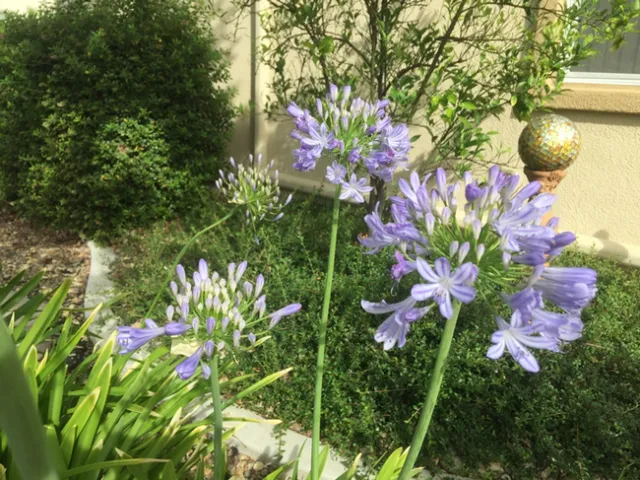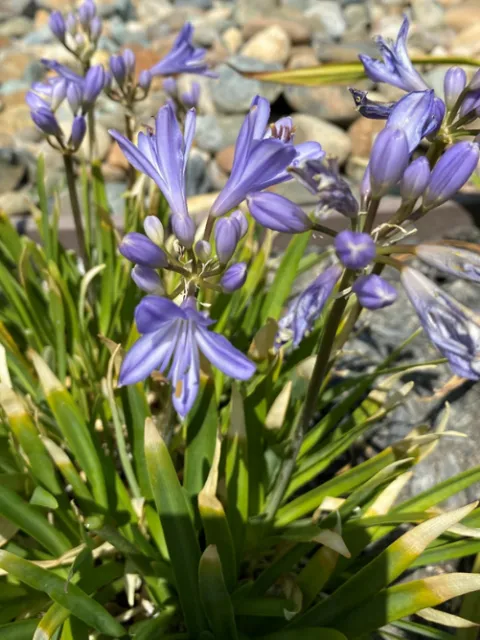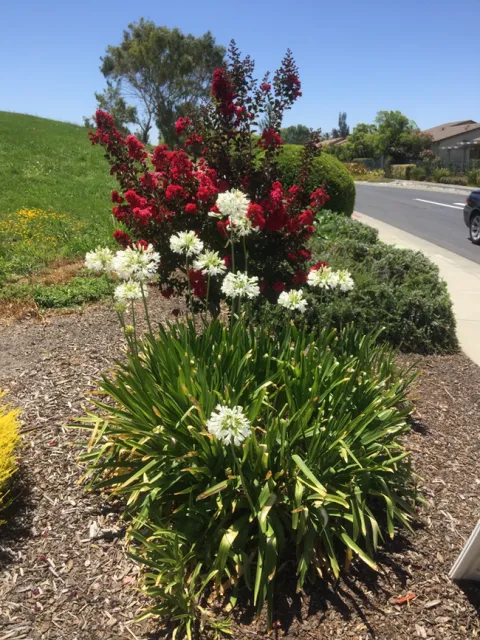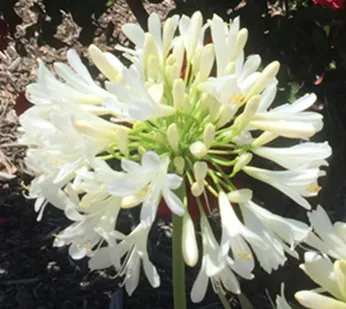
Agapanthus (Agapanthus Africanus) are beautiful perennials that thrive in Solano County and over most of Northern California. They hold their flowers well above the strappy leaves on stalks sometimes 3 feet high. Their blooms are part of clusters, usually in a spherical shape, looking a little like a globe-shaped fireworks display. They come in shades of blueish purple and white, as well as pink ones found in some of the perennial catalogs.

In addition to the full-sized varieties, they come in a small or short versions, one of which is the Peter Pan variety. That variety was so popular, it has become a common name for all Agapanthus. You may also hear them called Lily of the Nile or Nile Lily, African Lily, African Love Lily. Love Flower or Elaine Plant. The name Agapanthus is derived from the Greek: agape meaning "love", and another Greek word anthos meaning "flower", together meaning Love Flower or Flower of Love. Although almost all of its names use “Lily”, it is not a true lily. It falls under the family Amaryllidaceae and in the subfamily Agapanthoideae, containing only its varieties.

Gardeners are often worried or troubled by Agapanthus changing color from purple to white. Once they turn white, any blooms from plants coming from that Rhizome will be white. There are many web comments about this, and a variety of different reasons are given, some by experts. Since there seems to be no common answer, make up your own and enjoy the diversity in your home collection.
Some people will tell you Agapanthus is poisonous, especially for small children and pets. This misconception may come in part due to people calling it a lily, since true lilies are very poisonous to cats, with one bite of flower possibility leading to renal failure. Agapanthus is not a lily and is not considered to be poisonous. However, its toxicity can cause skin irritation if the sap gets on your skin. and gastrointestinal distress if it is ingested, For this reason, it is recommended you wear gloves when working on these garden beauties.

In folklore, Agapanthus is considered a magical plant with many medicinal benefits for various conditions. The reason it was called the Love Flower is that part of the plant was used as an aphrodisiac. It was also been used in concoctions to assist with the treatment of cough, colds, chest pains, heart diseases, and paralysis. In addition to the believed medicinal benefits, the blooms were worn as a fertility charm or a charm to protect a baby growing in the womb, ensuring its good health. You may want to stick to its mood enhancement properties when you bring some in and place in a vase. They make excellent bouquets and will last about 10 days after being cut.
https://www.bhg.com/gardening/plant-dictionary/bulb/agapanthus/
https://en.wikipedia.org/wiki/Agapanthus
https://wagwalking.com/condition/elaine-poisoning

